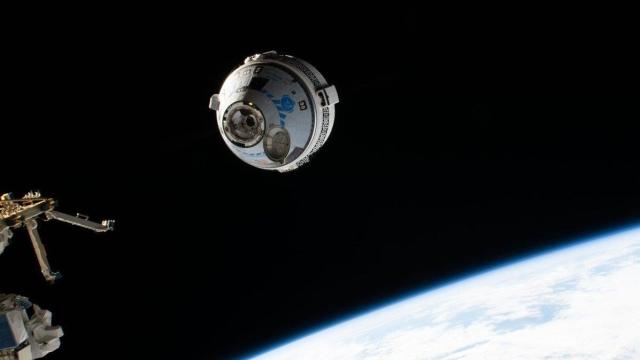Following a scrub on Monday, Boeing is getting ready to launch its first crew of astronauts to the International Space Station (ISS) on Friday, May 10, as part of a $US4.3 billion contract with NASA. Perhaps surprisingly, this is only the sixth vehicle owned or funded by NASA to be used throughout the agency’s storied history.
The space agency has been around since 1958, yet only a select few spacecraft have transported NASA astronauts to space. Boeing’s Starliner could join a rather exclusive list should it succeed in docking with the ISS and delivering its precious human cargo. We’ve put together a list of all the spacecraft that have flown, or will soon be flown, with NASA crews on board.
The Mercury capsule

On May 5, 1961, Alan Shepard became the first U.S. astronaut to go to space on board the Mercury space capsule. The 15-minute suborbital flight was NASA’s first dipping of its toes into the celestial waters, with the main objectives being to assess human capabilities in a space environment and safely return astronauts to Earth.
Project Mercury, the first American human spaceflight program, ran from 1958 through 1963. In the photo above, Project Mercury astronaut John H. Glenn, Jr. is seen entering his Mercury Friendship 7 capsule before launch on February 20, 1962. Glenn became the first U.S. astronaut to orbit Earth during his nearly 5-hour flight. Glenn’s flight was cut short by a faulty signal indicating a problem with the heat shield, but he returned to Earth safely after three orbits.
The Gemini capsule

After astronauts got a taste of orbital space, it was time to train them for the Moon. Project Gemini served as a bridge between Mercury and Apollo.
With the Gemini missions, NASA achieved the first rendezvous of two human spacecraft in orbit. In this photo taken on December 15, 1965, the Gemini VI spacecraft can be seen through the hatch window of Gemini VII at an altitude of 160 miles (258 kilometers) above Earth.
Unlike the Mercury spacecraft, which was just barely big enough to fit one astronaut, the Gemini capsule carried two astronauts on board. Through their missions, the astronauts could change the capsule’s orbit, work outside of the spacecraft, and remain in space for at least two weeks.
The Apollo Command and Service Module
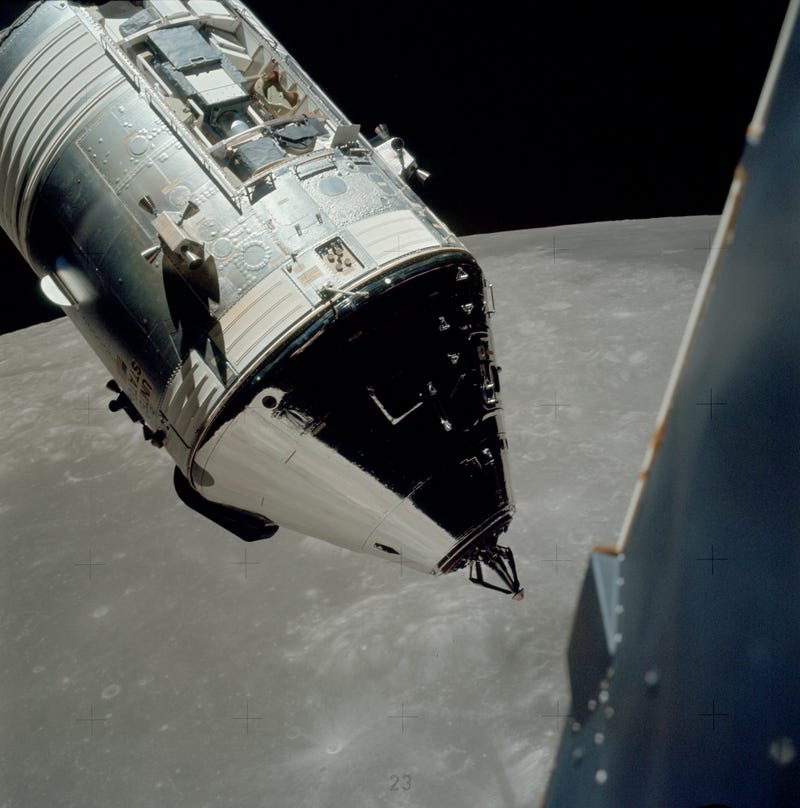
On July 20, 1969, NASA astronauts Neil Armstrong and Edwin “Buzz” Aldrin Jr. became the first to land on the surface of the Moon.
The Apollo 11 crew rode on board the Apollo Command and Service Module (CSM), named Columbia, which transported them to lunar orbit. From there, the pair hopped on the Lunar Module, which they used to touchdown on the Moon’s surface, while pilot Michael Collins remained on board the CSM spacecraft in orbit. The Lunar Module (LM) took off from the Moon on July 21, and the crew returned to Earth three days later. So in this sense, NASA utilized two crew-rated spacecraft for the mission: CSM and LM, though the latter could only return astronauts back to space from the lunar surface.
The photo above was taken on December 14, 1972, revealing a view of the CSM, which was piloted by Apollo 17 astronaut Ronald Evans, from the Lunar Module, which has astronauts Eugene Cernan and Harrison Schmitt on board.
The Space Shuttle
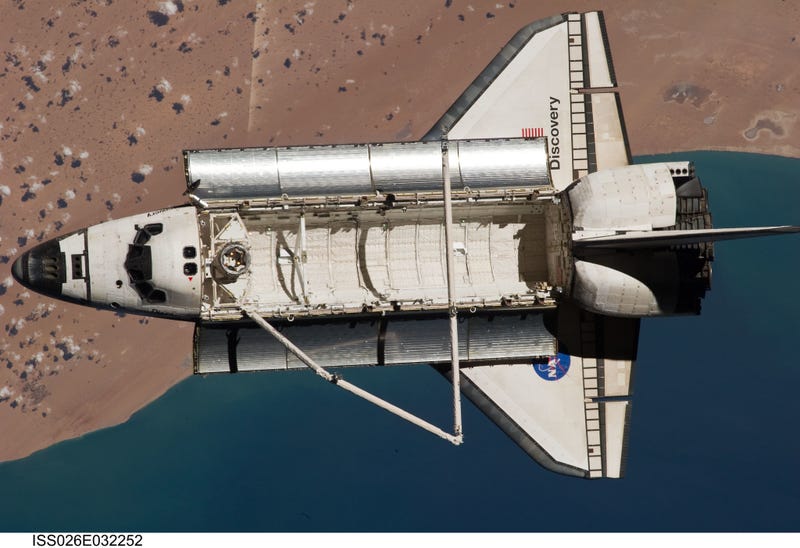
NASA’s iconic Space Shuttle era spanned across 30 years, operating from 1981 to 2011. The partially reusable low Earth orbital spacecraft flew a total of 135 missions, carrying astronauts to orbit, repairing hardware in space, and even helping to build the largest structure in Earth’s orbit, the ISS.
Related article: The Space Shuttle Was a Beautiful—but Terrible—Idea
The Space Shuttle not only increased NASA’s access to space, but it also inspired a new era in spaceflight. In the above photo, the Space Shuttle Discovery is seen from the ISS after the two spacecraft had separated on March 7, 2011.
The Soyuz crew ship
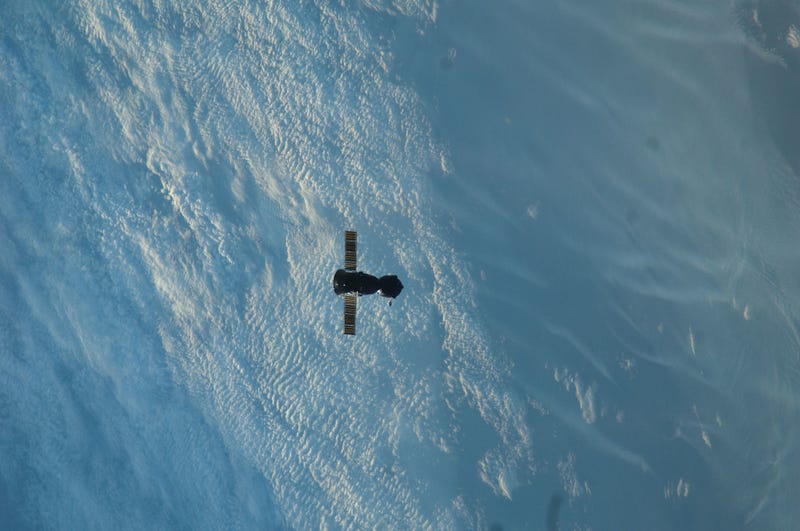
Following the retirement of the Space Shuttle, NASA relied heavily on Russia’s Soyuz spacecraft to transport its astronauts to the ISS. Soyuz was designed for the Soviet space program and has been operational since the 1960s. Unlike its orbital counterparts on this list, this spacecraft was not developed by, or with the help of, NASA but it still deserves an honorable mention. The spacecraft launches from Kazakhstan and takes about six hours to arrive at the ISS. A seat swap arrangement with the Russian space agency Roscosmos occasionally sees NASA astronauts still riding aboard the Soyuz.
SpaceX Crew Dragon
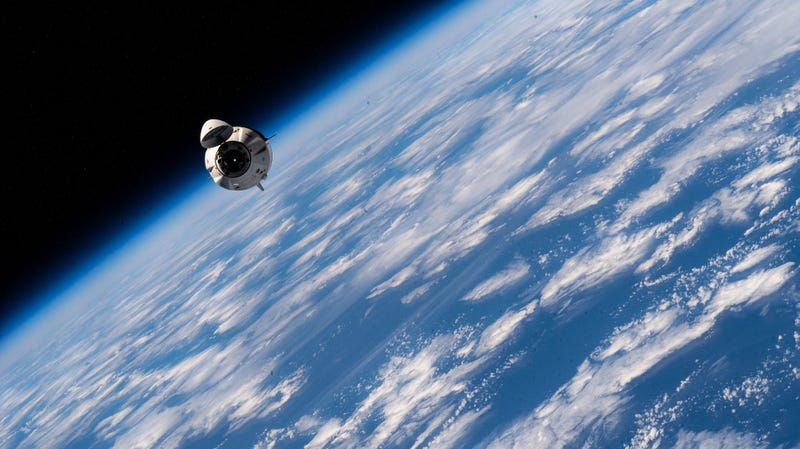
NASA needed to stop relying so heavily on Soyuz for rides to the ISS, and so it forged partnerships with private companies to help launch its astronauts to space.
At the time SpaceX was awarded its NASA contract, it was the less expensive proposal at $US2.6 billion. Boeing was seen as a more reliable company with a better track record. It’s safe to say things have drastically changed since then, with SpaceX launching its eighth crew to the ISS in March 2024 while its counterpart lags terribly behind.
SpaceX’s Dragon spacecraft is capable of carrying up to seven passengers to and from Earth orbit, and measures at 26.7 feet tall (8 meters). It’s equipped with two drogue parachutes to stabilize the spacecraft after it reenters through Earth’s atmosphere, plus four main parachutes to decelerate it prior to an ocean landing.
Boeing’s CST-100 Starliner
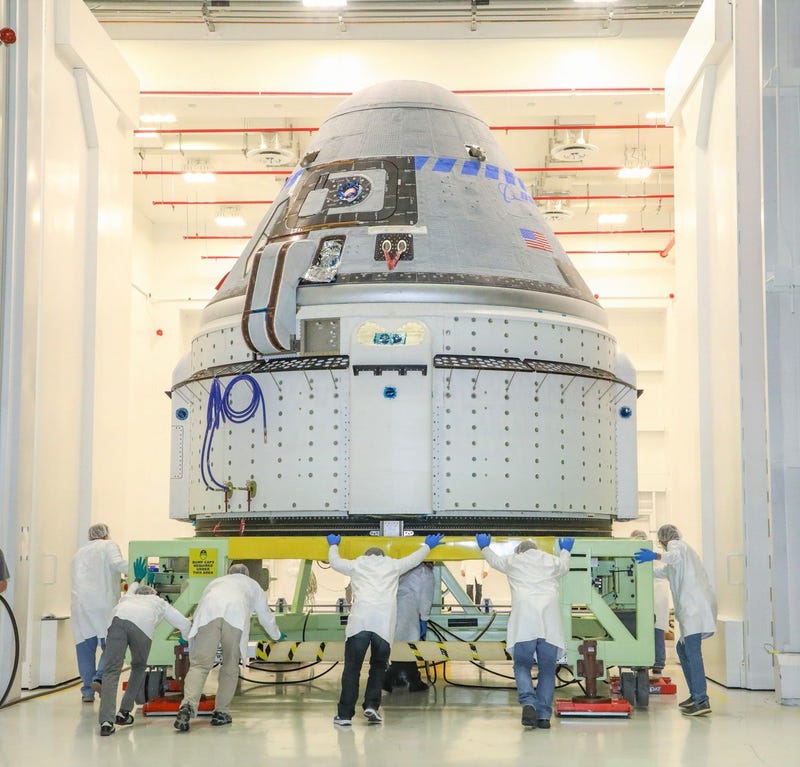
It’s been a rocky road for Boeing’s $US4.2 billion Starliner. And though it’s ready to host a pair of NASA astronauts for the upcoming crewed demo, it’s still not a crew-rated spacecraft.
Related article: Let’s Look Back at Boeing’s 10-Year Struggle to Launch Humans on Starliner
The CST-100 Starlinerwas first conceived in 2010, built on a long legacy of designing and building spacecraft for Apollo. The spacecraft measures 14.8 feet (4.5 meters) across and can fit up to seven astronauts, and is around the same size as the Dragon crew capsule. Unlike SpaceX’s Dragon spacecraft, however, Starliner has traditional hand controls and switches, as well as touchscreens. The Crewed Flight Test (CFT) will carry NASA astronauts Butch Wilmore and Suni Williams on board Starliner.
Orion
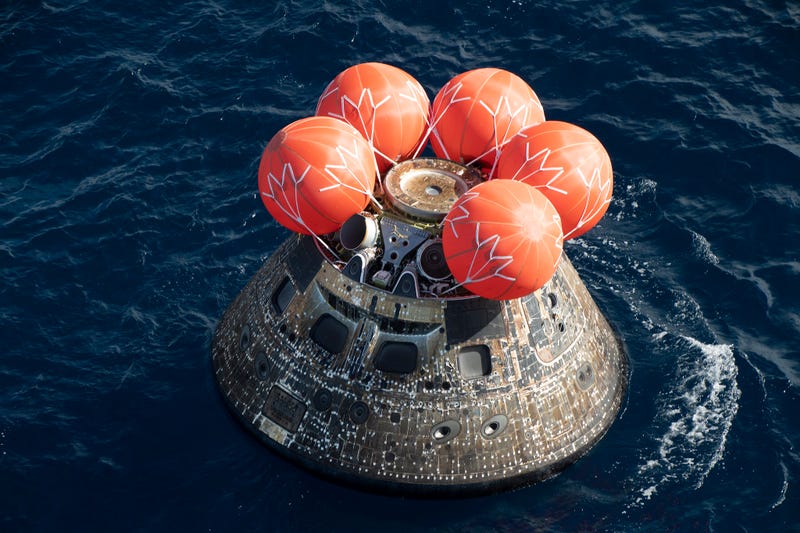
As NASA prepares to land astronauts on the Moon, the space agency developed a crew capsule to carry its next-generation explorers to lunar orbit. The spacecraft has yet to perform a mission with actual astronauts on board, but the vessel is crew-rated and ready for the task.
The Orion capsule is designed to carry a crew of four astronauts to beyond Earth orbit and accommodate its passengers for up to 21 days. Orion already flew to the Moon and back during the uncrewed Artemis 1 test flight in late 2022, and it is currently being prepped for its first crewed flight in September 2025—the much-anticipated Artemis 2 mission. That said, the capsule still has a few outstanding safety issues, including a wonky heat shield, that could jeopardize its upcoming mission.
